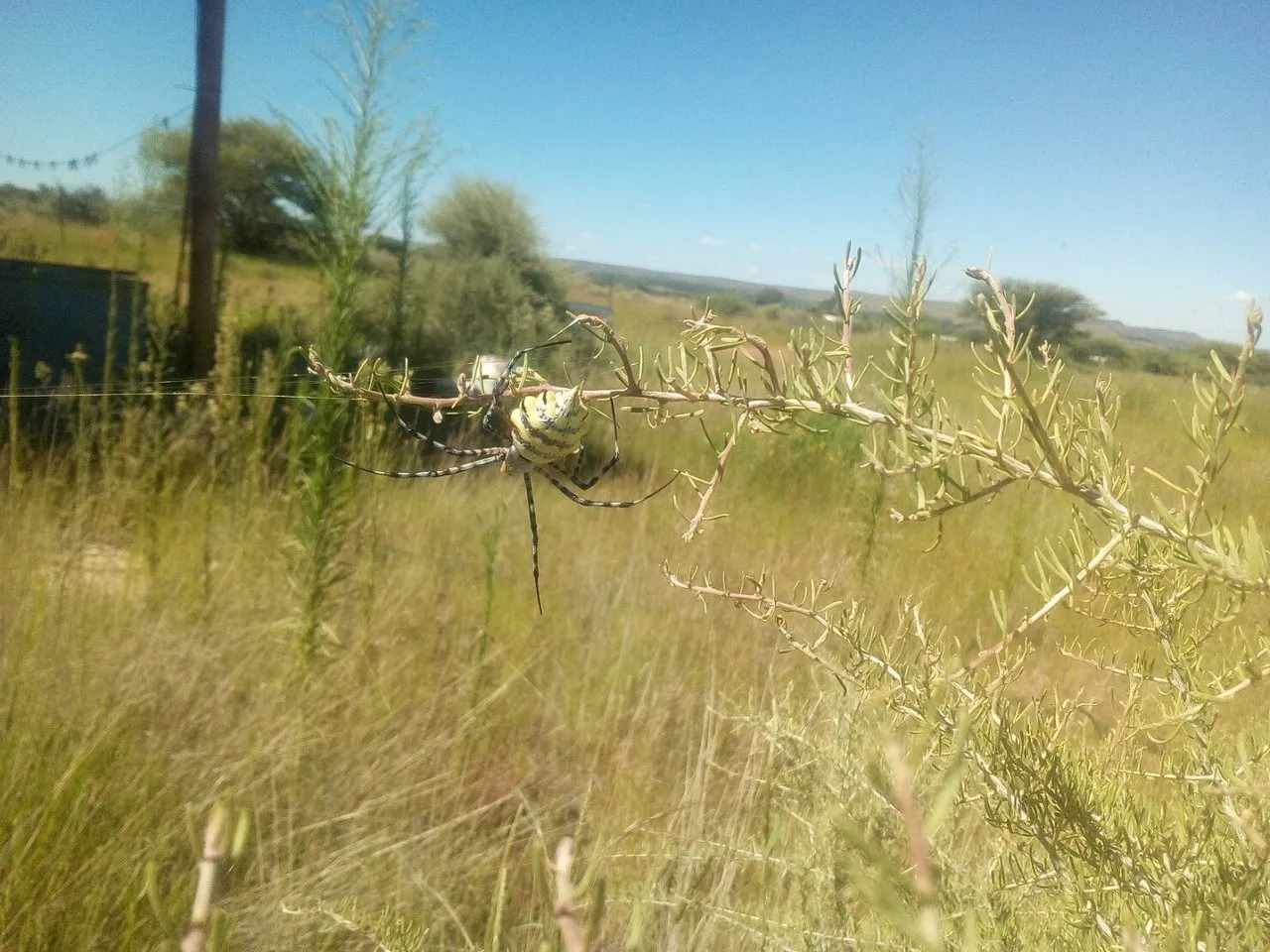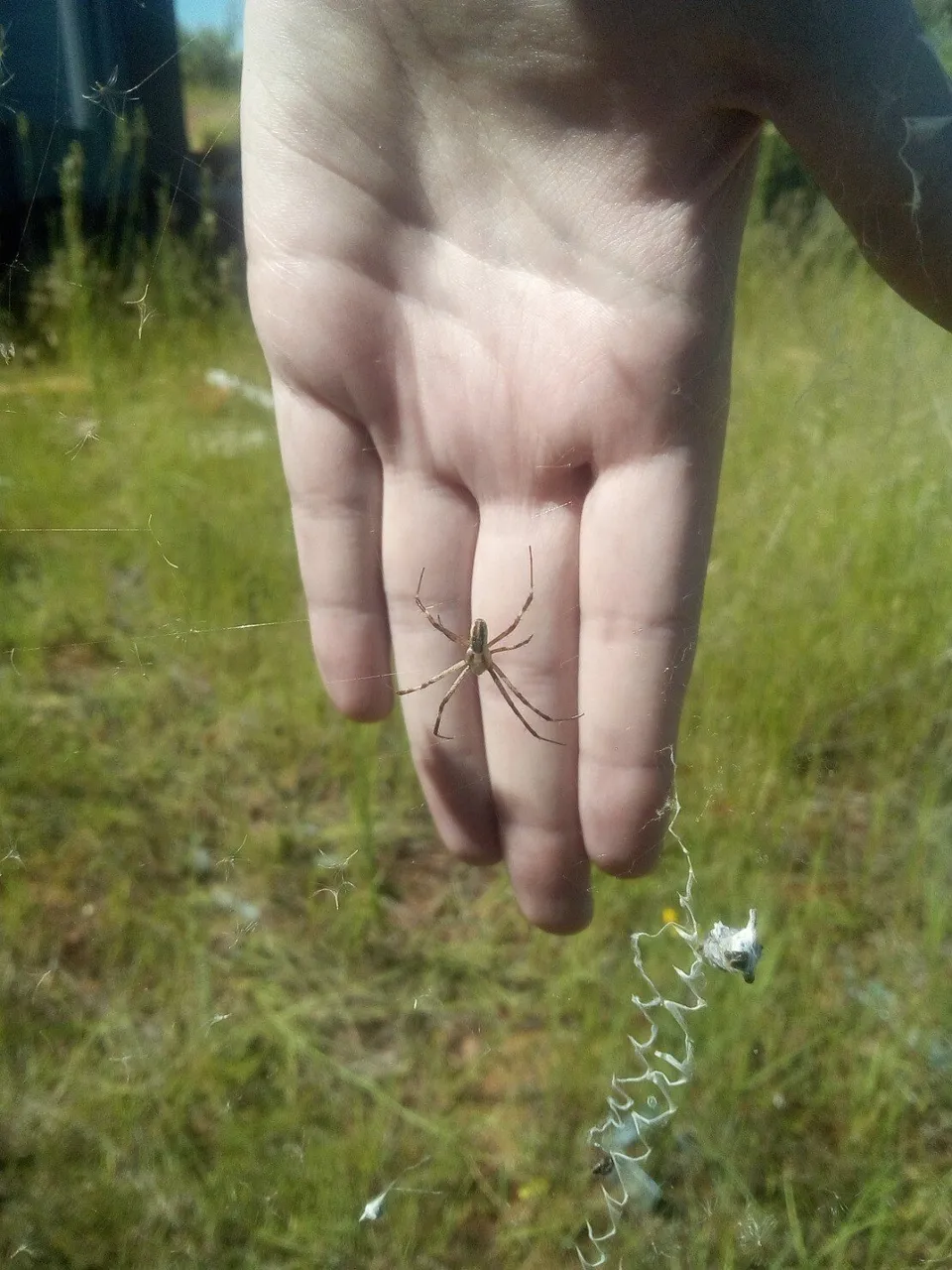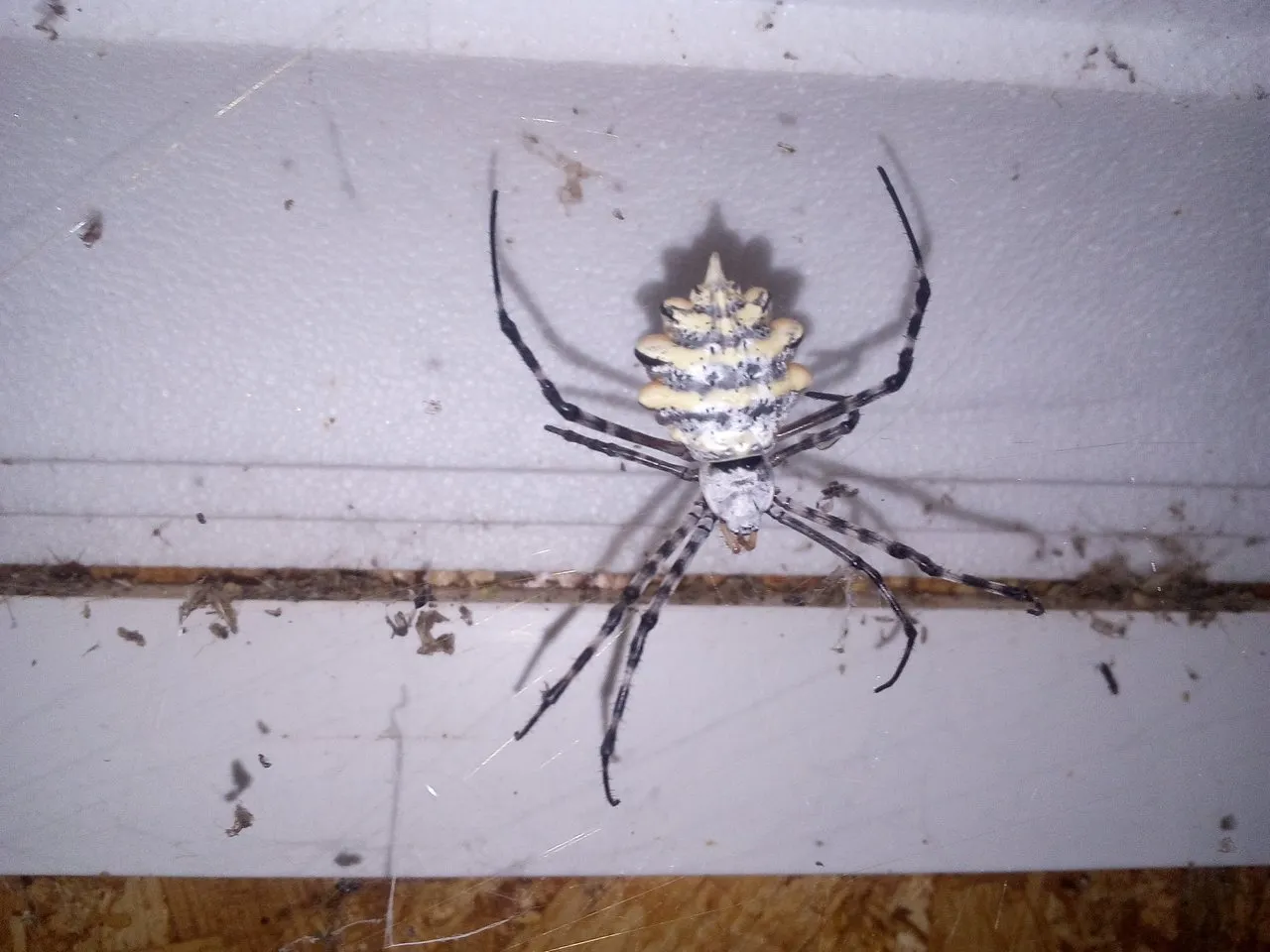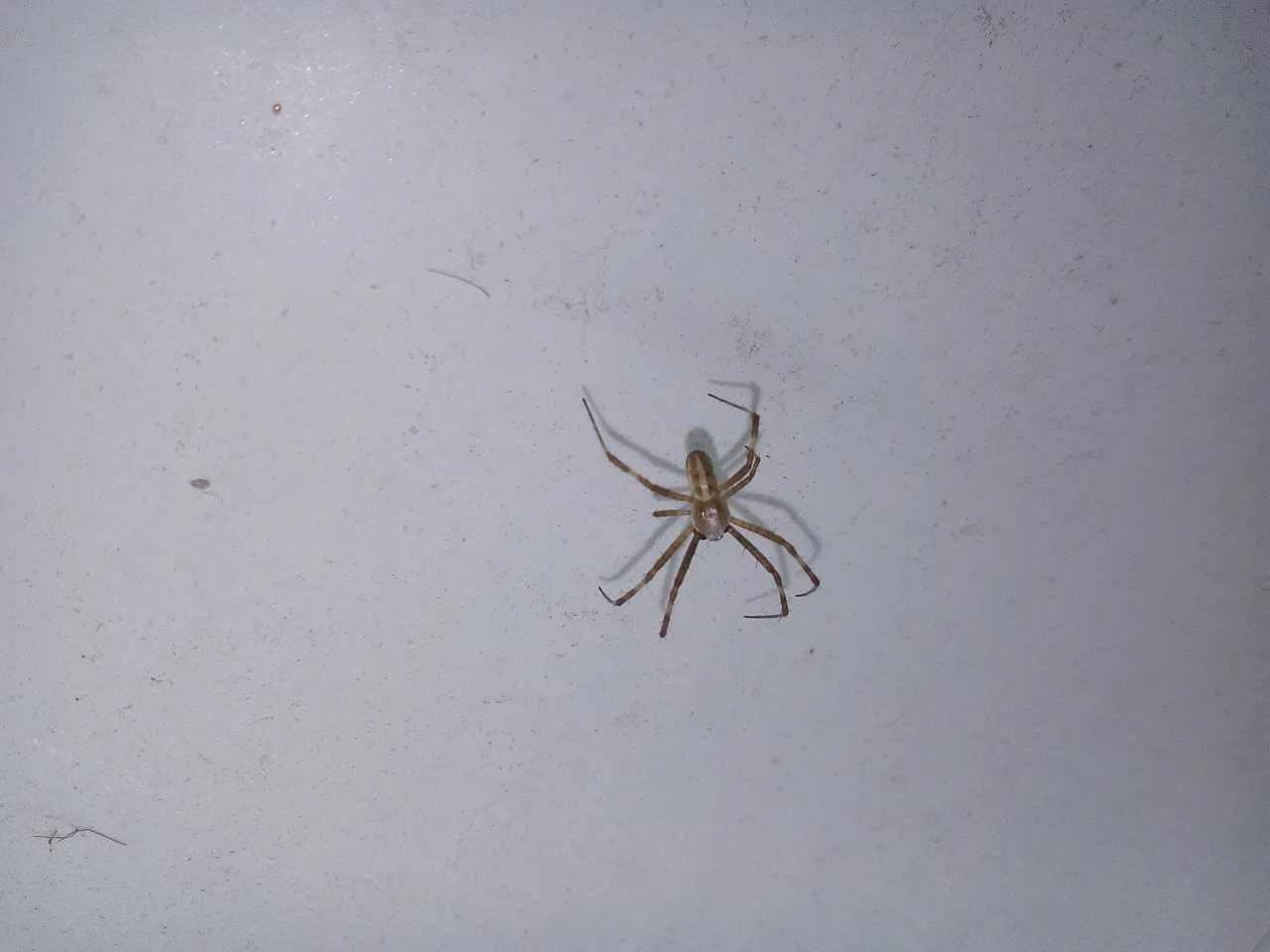Hello, hello, Hive!
I see a lot of photos of orb-weaver spiders on Hive and I figured I'll hop on the band-wagon and show off my own find. This spider is in the genus of orb-weavers that tend to be among the largest in the family. Argiope spiders are commonly called Garden spiders and members of this genus are found all over the world.
I think they're among the most graceful spiders, physically and behaviourally. They're excellent predators and their shapes are wild. Not to mention their size! But garden spiders are shy and skittish so you have to approach them carefully or they'll run off their web to their hiding place.
• ARGIOPE LOBATA •

Argiope lobata, the lobed orb-weaver. This female had set up a huge web in our backyard, typical of Argiope sp. spiders.
Like all orb-weavers, A. lobata spins her web in the typical orb-like pattern, the pattern commonly used to depict spider webs. They're clean and tidy in their construction, and the web is sticky (not all spider webs are sticky). And like all orb-weavers, the venom is medically insignificant, though the bite can be a bit painful, like a needle jab 1.
Also pictured (below) is the male of the species. He dropped in to chill on the female's web and, what it appeared to look like, he brought a nice fat cricket for supper, perhaps to appease her in their courting ritual. At least 3 spiders are recorded as doing that, even bringing fake gifts to the female and attempt to mate before she realises it's not real food 2. Some male spiders species even bring their rivals males as these food gifts!
I'm not sure if A. lobata males engage in mating gifts, however; I have only seen it once with this couple's mating. Perhaps he just caught a cricket that jumped into the female's web and abandoned it after wrapping it up? Not a gift, exactly, more a happy accident for the female, then. If they do indeed bring gifts, it would make sense because the female A.lobata are known to commit cannibalism after copulation 3.
• GENUS •

A. lobata can easily be confused for their cousin species Argiope australis which is more commonly found in South Africa. A quick tell between the two is the black tips on the lobes of the silvery abdomen that mark A. lobata.
Argiope spiders are identified by their large size, long and ususally-but-not-always banded legs, silvery carapace, and their abdomen have yellow on it. They also tend to hang in the centre of their web with their legs divided so that they form an X.
• DESCRIPTION •

Taxon:
- Class: Arachnida
- Order: Araneae
- Infra-Order: Araneamorph (true spiders)
- Family: Araneidae
- Genus: Argiope
- Species: A. lobata
Female
Around 25mm in body length. Leg span of approximately 60mm diagonally.
Cephalothorax:
Carapace silvery white with black half-moon marking near pedicel (small tube connecting the cephalothorax to the abdomen). Large chelicerae with small fangs. Pedipalps with black setae.
Abdomen:
Abdomen oval with sharp black-tipped ridges on sides. Dorsal abdomen with 3 rows of 2 indents in middle, silvery white with yellow stripes across in line with ridges. Spinnerets under abdomen, raised hump. Epigynum with appendage. Abdomen underside black with yellow outline along ridges, yellow splotch pattern in parallel down centre toward spinnerets.
Legs:
First two leg pairs longer than hind two. 3rd pair shortest. All legs pale and covered with black bands down segments fading into black on metatarsus and tartsus. Black setae on legs, most on metatarsus and tarsus.
Male
About 6mm in body length. Leg span of approximately 11mm diagonally.
Cephalothorax:
Cephalothorax larger than abdomen. Two thick dark brown stripes parallel down silvery carapace. Large brown pedipalps.
Abdomen:
Narrow and long brownish silvery abdomen. Two dark brown stripes down centre dorsal abdomen. Yellow spots on black ventral abdomen.
Legs:
First two pairs of legs longer. 3rd pair shorter than others. Sparse long hairs on legs. Cream legs with dark brown joint segments and spots on femurs.
• ABOUT THE GENUS •

Argiope is a genus known for large and yellow orb-weavers with a silvery carapace. They often weave zig-zags (called stabilimentum) on their immense webs and this, we think, helps alert larger animals that there is a web so that they don't walk or fly into it easily and destroy it 4. Not always successful but it helps.
When threatened, Argiope spiders will also shake their web, and it looks like the spider is bouncing. This, too, confuses predators and makes the spider either difficult to see or appear as something else to them 5.
Most male spiders are considerably smaller than the females, as we see here with Argiope spiders, but this is not always the case. Sexual dimorphism in spiders is varied per genus and species. As are the mating rituals.
One of the reasons to keep A. lobata and any orb-weaver in your garden is simply that their webs trap mosquitoes very well, along with flies and moths.
• NOTES •
There is currently an adult female A. lobata living above one of our lights in the living room, and she had become quite fat chowing down all the moths that fly up there. But what I've found fascinating is how she co-exists with 3 other web-dwelling spiders. She sort of shares her web and space with Pholcids (daddy-long-legs/cellar spiders), a Theridiid species, and with tent-web spiders.
While I will be forced to relocate them all outside, thanks to the colonial nature of the tent-web spiders, for now I'm enjoying watching how they behave around each other. I haven't yet seen any of the 4 spiders snacking on each other. They also seem to get along with some mantids that hang around up there. Perhaps the abundance of food allows for co-habitation?
Also living with the female A. lobata are two males. They've been on her part of the web for a couple of weeks now and seem to be settled in for the long run. The female is currently gravid (spider version of being pregnant) and should be making egg sacs soon.

